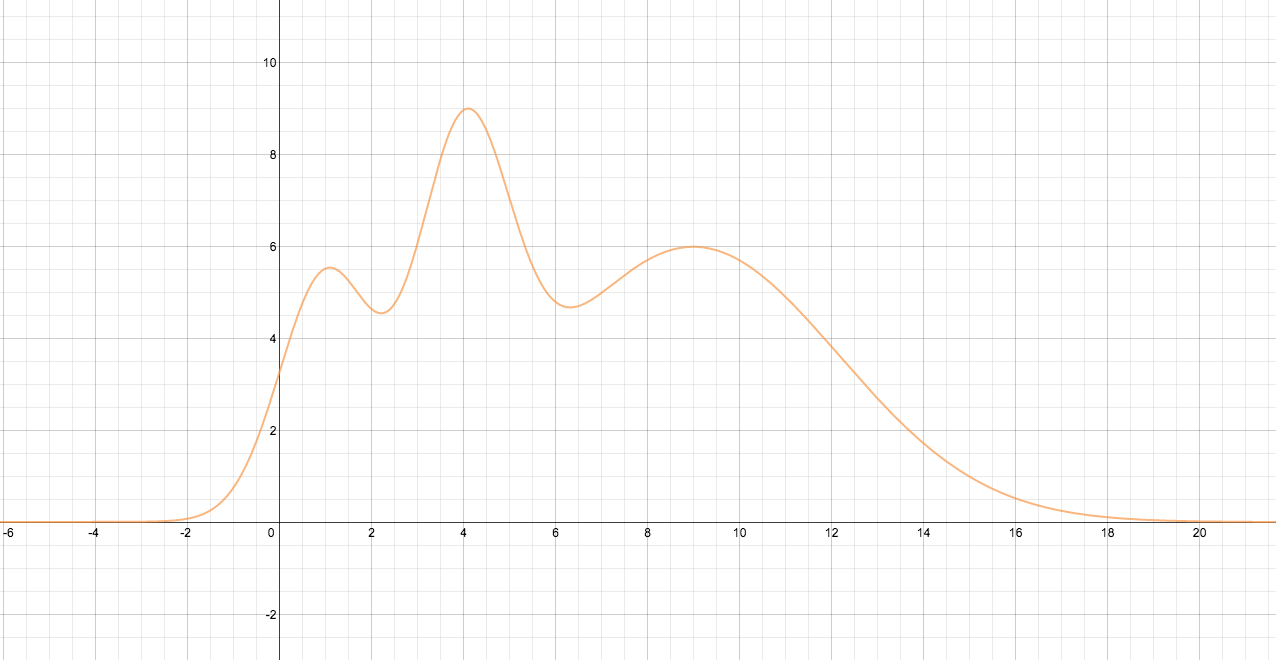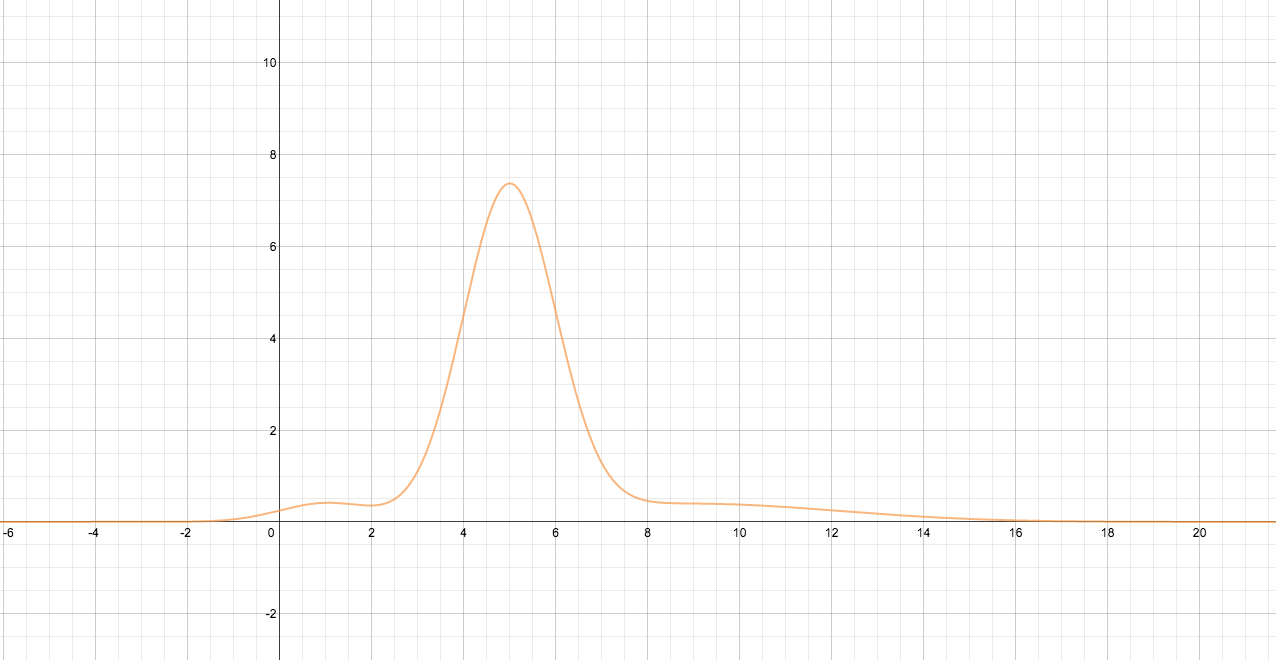Examples of Master Equations¶
Irrersibility and Master Equation¶
Fourier series is a Complete Orthogonal System. An function \(F(x)\) is expanded using the Fourier series,
Recall that the solution to the master equation of a finite chain of particles with nearest-neighbour interactions is
with
Note that the expansion is not going to infinity. On such a finite component series, recurrence of states will happen. Though the time needed for recurrence is long when the number of particles gets large.
The second moment, \(\langle m^2 \rangle\), tells us the expected location of the particle.
Why not the first moment?
The first moment is 0 for a symmetric system.
To calculate the second moment, take the second derivative of \(P^k(t)\),
Set \(k=0\), we get
There is no need to calculate \(P_m(t)\) anymore.
Generalization
Regardless of the details of the interactions, we always have the form
Continuum Limit¶
In the continuum limit, the master equation is the diffusion equation,
Propagators
- Propagators of this equation is gaussian like.
- Propagators of discrete master equation is a decay function, i.e., \(I_m(2Ft)e^{-2Ft}\).
It is know that the second moment of the diffusion equaiton is the Einstein’s brownian motion result
where
Landau-Teller Master Equation¶
Consider a system bathed in heat bath, we can Taylor expand the system to second order which are harmonic oscillators. Fermi golden rule tells us that these harmonic oscillators can only have nearest energy transition.
Continuous Grid or Energy Levels¶
Note
Different energy states in a system follows the ratio
with \(f_1\neq f_1'\). For harmonic oscillators,
In such a system
Note
The transition
is called the Landau-Teller master equation. It works on non-translational-invariant systems.
1-D Discrete Master Equation¶
The master equation
has the solution
in which \(\Pi_{m-n}(t) = e^{-2Ft}I_m(2Ft)\) is the propagator.
Non-translational Invariant
If the sytem doesn’t have translational invariance, the solution
has a propagator of \(\Pi_{m,n}(t)\) which depends on both m and n.
Continuum Limit¶
Fourier transform
Solution
Inverse
Propagator¶
To solve the master equation, the propagator \(\Pi(x-x',t)\) is very helpful. For simple discrete master equations, the propagator becomes \(I_m(2Ft)e^{-2Ft}\).
Continuous master equations or diffusion equations evolve according to
given the initial distribution.
In infinite time, the system reach equilibrium.
As long as the system has translational or rotational invariance, we can use Fourier transform to solve the equation.
For \(\zeta =0\), there is only diffusion. Translational invariance is preserved. The Fourier transform for continuous equation is
The transformed equation (for \(\zeta=0\) case),
and the solution is
To find out the propagator, we complete the square,
The propagator is then
Hint
The propagator can also be singular. One of such examples is the logorithm sigularity in 2D.
Bias in Master Equation¶
When \(\zeta\neq 0\), the first term on the right hand side is a decay or viscous term,
Hint
To check the properties of \(\zeta\), set \(D=0\).
When \(k_w > 0\),
- \(\zeta > 0\) : exponential grow;
- \(\zeta < 0\) : decay
We can use Fourier transform and complete the square to solve it.
Hint
This formalism is very much like the Gauge Transformation. We define a new derivative
Then we plugin this new derivative into diffusion equation,
Define \(\zeta := 2\Gamma\), and let \(2\Gamma^2 + \frac{\partial}{\partial x} \Gamma\). [1]_ The diffusion equation under this kind of transformation becomes the one we need.

